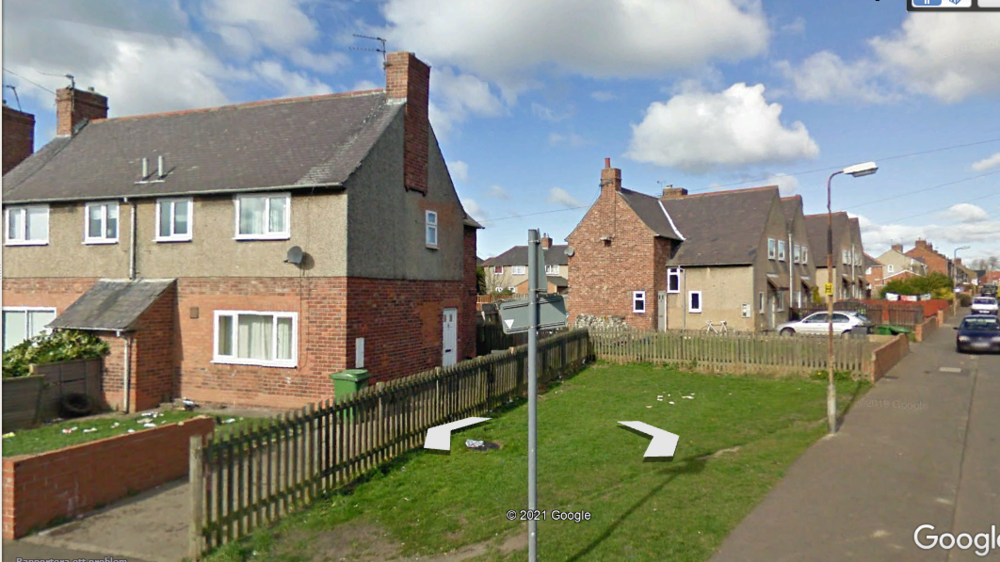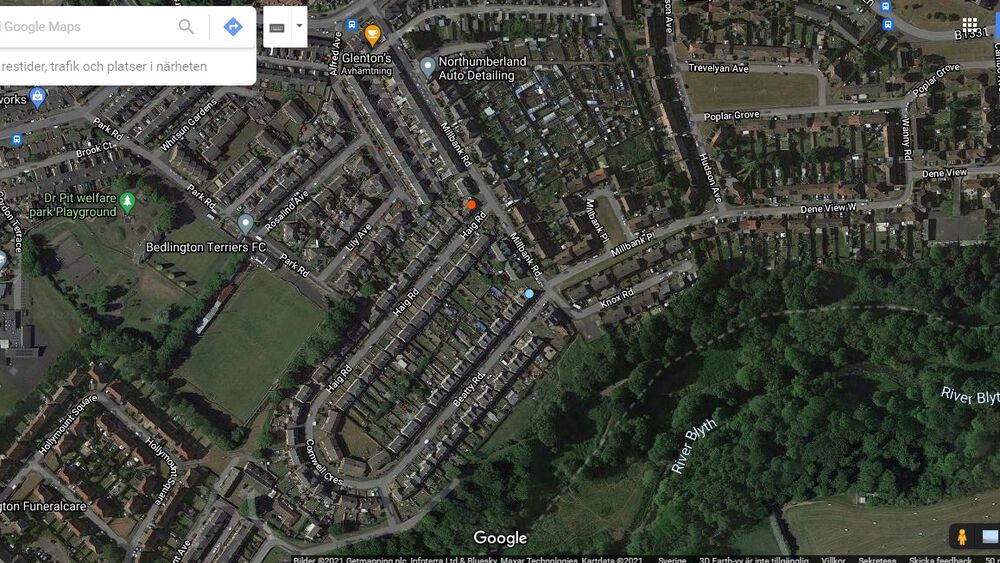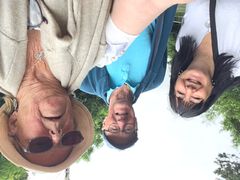.jpg.cdd7f8371d17e2f2f2e2a0e21e02f727.jpg)
Canny lass
Supporting Members-
Posts
3,607 -
Joined
-
Last visited
-
Days Won
413
Content Type
Forums
Gallery
Events
Shop
News
Audio Archive
Timeline
Everything posted by Canny lass
-
Thanks Tony! That's about as clear as mud to me but I'll take your word for it. My personal experience of Beatty Road is limited to playing in the garden of 35 Haig Road which had a gate through to the garden of the house opposite, on Beatty Road, and the family who lived there. Otherwise, I use Google - and it's not always the most reliable source.
-
I agree! It's a tough one to crack but I'm sure we'll get there in the end.
-
Eggy, I have no idea what happened with my last post. I tried to upload anothe photo and four times it refused to accept it " server error". Then my edit time had run out. Here's the continuation: That's the house which I think appears in @lilbill15's photo and the sharp bend maybe the entrance to Beatty Road. I base that theory on the two features of the house which I mentioned above - side door with adjacent window and that odd, roofed bit between the two houses. Ypu can see in the previous photo that most houses on 'my' side of the road have these features. However, much depends on what stood on the area which now forms the entrance to Knox Road in the 1930s. Were there any railings? If not my other theory is the first house on Haig Road at the junction with Millbank Road. There you have the same layout as in @lilbill15's photo but the sharp bend would then be the entrance to hag Road, not Beatty Road. The photographer would then be standing in the front garden at the bottom righthand corner of this next photo: (Hoping for better luck uploading this time, fingers crossed) However, the style of the house doesn't quite fit the photo.
-
No offence taken, Tony. I was using Google maps for my description and it appeared to me that Knox Road was a continuation of Millbank Road. Here I've marked Beatty Road (yellow), the houses on the corner of Beatty Road and Millbank Road (pink) and the spot where I think the photographer may have been standing (green).
-
I don't seem to be explaining this very well. let's have another bash at it. The houses in your photo (shown above) are on Beatty Road. The houses on the other side of the street are also on Beatty Road (that's 'your' house on the left): If I go left to the last house on 'my' side of Beatty Road it's this one:
-
Neither do I. Eggy and I are discussing Millbank ROAD , onto which Knox Road opens. Sorry if I wasn't clear about this. The only purpose in mentioning Knox Road was to identify the whereabouts of the houses i the photo. I think the photographer may have been standing in the area that is Knox Road today.standing
-
Eggy, I don't think you are too far out when you mention Beatty- and Haig Road. I'm leaning more and more to that area but at the other end from Cornwall Crescent. I think the house to the left of the photo could be the first house on Beatty Road (marked blue) in which case the photo must have been taken somewhere at the end of what is now Knox Road. I don't know what was there in the 1930s. In the 50s it seems to have been empty space. An alternative would be the first house on Haig Road (marked red)with the photo being taken from Millbank Road. I However, I'mleaning more toward the Beatty Road house because of some of the features seen on the photo. Firstly, there's that small, roofed part of the house(seen to the left of the blue mark) which can be seen on the front of quite a few houses on Beatty Road. Secondly, the front door is on the side of the house and there is a small window to its left. Both of these features can be seen in this next picture of the same house. The small window has been removed but it's easy to see where it's been: Does anybody know of other houses/housing estates with these features? I know that many houses in Haig Road have the main entrance on the side rather than facing the road, but I personally don't know of any others. Oops! almost forgot the marked original:
-
I don't see the similarity. Kings Road railings don't appear to have the looped top and the angled supports are at a different height. I don't think it's West Lea either. @lilbill15What is it about the photo that makes you think it's an end house?
-
Always nice to see you popping in HPW! I know you'v e got a lot on your plate looking after Cath so I really appreciate the few minutes you can spare of your limited and valuable time.
-
@lilbill15 I don't think this is the back garden of 25 Millbank Crescent (and it's certainly not the front). Opposite and parallel to the rear of Millbank Crescent was Whitsun Ave, a row of terraced houses of approximately the same length. (See Eggy's map, 9th post, page 1, above. In your photo you can see a gable end and houses at right angles to each other neither of which is possible - if the 1924 map is correct even in 1933-34. What I can say about that photo is that dad, or Don, was teething at the time (large teething ring pinned to his jersey). ☺️
-
.thumb.jpg.7493ddab4a696108cf2b849323d3c155.jpg)
48285399-EA0E-42D3-8E93-189B5B3B5728.jpeg
Canny lass commented on lilbill15's gallery image in People and Events Gallery
-
.thumb.jpg.7493ddab4a696108cf2b849323d3c155.jpg)
48285399-EA0E-42D3-8E93-189B5B3B5728.jpeg
Canny lass commented on lilbill15's gallery image in People and Events Gallery
-
.thumb.jpg.7493ddab4a696108cf2b849323d3c155.jpg)
48285399-EA0E-42D3-8E93-189B5B3B5728.jpeg
Canny lass commented on lilbill15's gallery image in People and Events Gallery
-
.thumb.jpg.7493ddab4a696108cf2b849323d3c155.jpg)
48285399-EA0E-42D3-8E93-189B5B3B5728.jpeg
Canny lass commented on lilbill15's gallery image in People and Events Gallery
-
@lilbill15 I must have missed this. It's been a hectic week! Pictures are always good and helpful to anyone looking at the site in years to come. Today is tomorrow's history, so to speak, but why start a new topic? How about working your way through History Hollow and adding photos to the relevant topics. When I'm researching I find it helpful when everything is in one bundle rather than scattered in small parcels. This is why I like our gallery so much.
-
It does indeed - a very big beef olive! My mother used to do that for Sunday dinner when she couldn't afford a 'proper' joint (of meat, in case anybody's getting wrong ideas).The name, rolled beef, doesn't ring any bells though. I don't think she had any special name for it.
-
Nothing to do with me! According to Merlin he got that recipe from The Geordie Cook Book, I think I spotted it on page 8 of Vic's index.
-
Welcome to the club! maps, cook books and dictionaries, the latter an industrial injury - well, that's my story and I'm sticking to it! The Geordie Cook Book does exist but it's also the name that Merlin gave to this topic when he started it 11 years ago. I don't have the book but I had a quick google and it's available online. Quite a few used copies available at Barter Books in Alnwick, a lovely place that Maggie introduced me to (nice day out). Also available on E-bay. Prices aren't too bad anywhere.
-
My OH has just said I should mention my 'Mediterranean olives'. Add crushed garlic and mediterranean herbs to your fiiling. Instead of carrots in the sauce add chopped tomatoes and more garlic. A dash of tomato puré can be added to give a bit more colour.
-
We have a 'Friends and Family Forum' for this type of query. Maybe Andy can move it for you.
-
Never heard of it!
-
BEEF OLIVES @lilbill15 I'm moving this here to our Geordie Cook Book. Hope that's OK. You asked: "what is a proper beef olive stuffed with, please? I’ve found several options, including simple breadcrumbs, but haven’t managed to produce anything that resembles the yummy school dinner version. I’d be very grateful for your advice". Here's my take on a family favourite. Filling 1. Slightly brown a couple of chopped onions in butter (not margarine). Add 3-4 oz fresh breadcrumbs and fry until really soft. That’s the base. Add any, or several, of the following in quantities to suit your own taste: Chopped: Bacon, chorizo, apple, dates (yum yum), cranberries, nuts, celery, mushrooms, or raisins. Sausage meat and leftovers work well too as do any herbs or spices you happen to have on the shelf. Just let your fantasy loose! You can add a beaten egg if you wish. I don’t. Filling 2. Mix together about 3-4 oz breadcrumbs, 1-2 oz suet (works with ice cold butter as well – I can’t buy suet here), I tbs chopped parsley, 1 tsp dried thyme, 1 tsp grated lemon rind, salt & pepper, 1 ägg and enough milk to bind it all together. That’s my mother’s recipe. After filling and frying my ‘olives’ I add more butter to the pan and fry some onions and carrots. When soft, I whisk a bit of flour into the fat left in the pan, pour in some strong beef stock (from cubes) and let it thicken a bit. Then I put the ‘olives’ in a slow cooker, pour over the sauce (sometimes I add a bay leaf, depends on the filling) and cook slowly (instead of using a big oven for one small pot). PS. You do know that you can cheat and make up a packet of dried stuffing which you then mix with any of the above additions?
-
I don't, and I know canny lass doesn't (as she always checks her posts and edit's where necessary) I very rarely check anything. Most of my edits hinge around adding photos, maps etc. Editing after adding a photo to the text is the only way I've found of being able to continue writing after adding the photo. Sometimes I need to add a comment and then another photo so it involves quite a lot of editing.
-
That brings back memories! Beef Olives was the first thing I made in 'cookery classes' - or 'domestic science' as the teacher called it. I still make a version of it. There are no strange ingredients so you should be able to find what you need. I don't know if you can get your beef really thinly sliced, I can't but here's a tip: Buy a piece of beef, rather than sliced beef. Half freeze it (or half thaw it if it's already frozen) and then it's easy to cut extremely thin slices using a very sharp knife.
-
.thumb.jpg.7493ddab4a696108cf2b849323d3c155.jpg)
Netherton - Newcastle Weekly Chronicle 13 September 1873
Canny lass replied to Kevin1956's topic in History Hollow
PS. Yes typewriters did exist in 1873 - but only just, having been invented in the 1860's.

.thumb.png.ee5e248baf8fd512885b22fa8013673c.png)

_LI.jpg.446ffa69db5455d2d02571389b7b2c70.jpg)
.thumb.png.a6aa372cda64e9f933f67b01c004f218.png)






